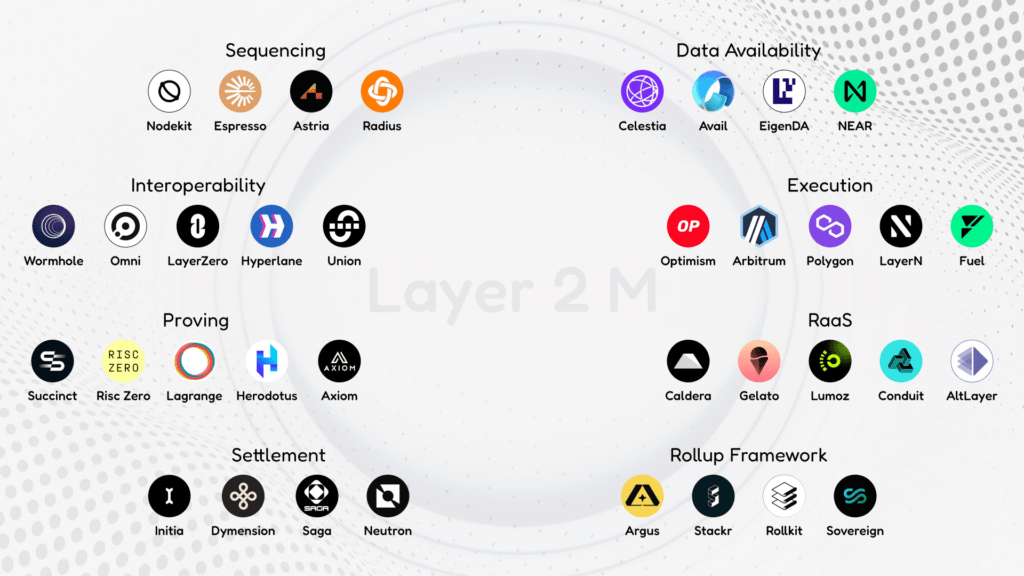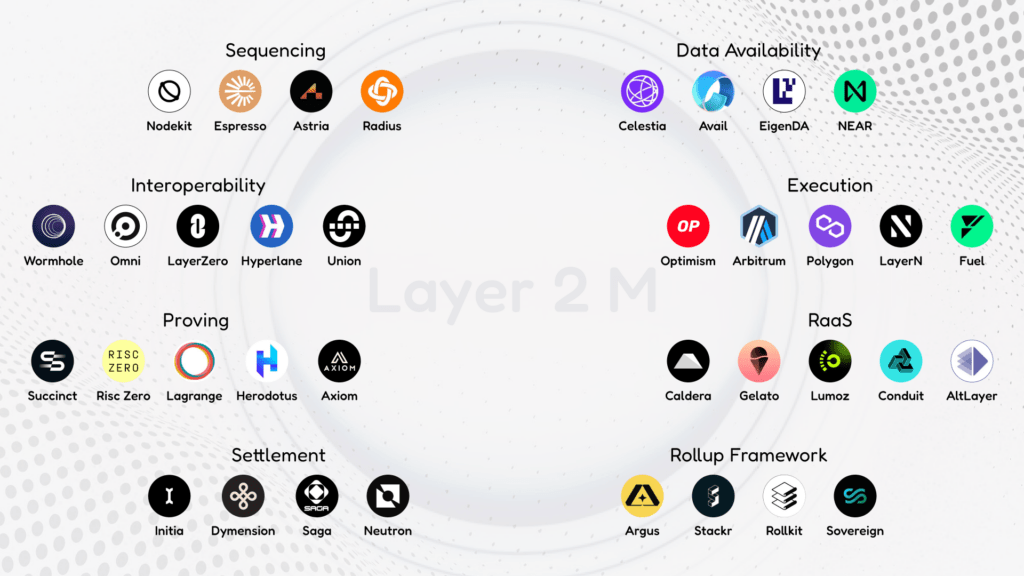Research Summary
The report discusses upcoming launches and upgrades of ten protocols in the DeFi space, including Reserve Protocol, Frax Finance, Synthetix, Instadapp’s Fluid, Eigenlayer, Uniswap V4, Stacks Nakamoto Upgrade, and monolithic Layer 1 blockchains like Fantom and SEI. It highlights the potential impact of these developments on the respective projects and the broader DeFi ecosystem.
Key Takeaways
Frax Finance’s Transition and Upgrades
- Frax’s Shift to Full Collateralization: Frax Finance is transitioning from partial to full collateralization, moving away from algorithmic backing. The USD peg will be maintained through Chainlink oracles and governance approval. This shift is expected to accrue more value to the veFXS token.
- Introduction of BAMM and FXBs: Frax’s Borrow AMM (BAMM) innovation allows users to leverage any token without oracles, managing asset prices and liquidity internally. FXBs, debt utility tokens that convert to FRAX after a specific time, offer a low-risk profit opportunity.
- Launch of Fraxchain: Frax is launching its native chain, a hybrid OP and zk Rollup, using frxETH as a gas token. The Fraxchain is currently on testnet, with potential support for all Frax stablecoins and incorporating decentralized sequencers.
Synthetix’s Transition to V3 and Andromeda Release
- Multi-Collateral Staking: Synthetix is transitioning to V3, introducing multi-collateral staking, which allows various collaterals to back synthetic assets. This could potentially increase sUSD liquidity and market support.
- Andromeda Release: The Andromeda Release, scheduled for this month, will introduce Core V3 and Perps V3 on Base, with USDC as collateral and for traders using Synthetix Perps, aiming to attract more users and liquidity providers.
- Potential SNX Inflation End: A proposal to end SNX token inflation is under consideration, suggesting a deflationary approach could align better with future growth.
Instadapp’s Fluid and the Revolution in Lending, Borrowing, and Trading
- Fluid’s Features: Fluid amalgamates features from Uniswap, Maker, Compound, Aave, and Curve, allowing lenders to borrow up to 95% LTV against ETH, offering partial liquidations, consolidating liquidity across protocols, and introducing Smart Debt and Smart Collateral.
- Role of INST Token: The INST token will govern Fluid, transitioning Instadapp from a middleware protocol to a more central role in DeFi, with significant innovation expected.
Eigenlayer’s Stage 2 Testnet and the Role of AVS
- Stage 2 Testnet: Eigenlayer’s Stage 2 testnet is live, enabling Restakers to delegate to Operators who validate Actively Validated Services (AVS), enhancing Ethereum’s shared security use cases.
- Role of AVS: AVS examples include Ethos for ETH restaking in Cosmos, Witness Chain for rollup security, Hyperlane for interchain messaging, Espresso Systems for decentralized sequencers, and Blockless for Network Neutral Applications across any L1/L2 blockchain network.
Uniswap V4’s Singleton Contract and Hooks
- Singleton Contract: Uniswap V4 introduces a “singleton” contract that reduces pool creation gas cost by 99% and enables cheaper multi-pool swaps.
- Role of Hooks: “Hooks” in Uniswap V4 allow for programmable contracts that act as “plugins” or “extensions” for liquidity pools, enabling a range of functions like onchain limit orders and autocompounding LP fees.
Actionable Insights
- Monitor Frax’s Transition: Keep an eye on Frax’s transition to full collateralization and the impact of its BAMM and FXBs innovations on the DeFi space.
- Assess Impact of Synthetix’s V3 Transition: Evaluate the potential impact of Synthetix’s transition to V3 and the introduction of multi-collateral staking on the DeFi ecosystem.
- Understand Fluid’s Potential: Gain a deeper understanding of Fluid’s potential to revolutionize lending, borrowing, and trading in the DeFi space.
- Explore Eigenlayer’s Stage 2 Testnet: Explore the potential of Eigenlayer’s Stage 2 testnet and the role of AVS in enhancing Ethereum’s shared security use cases.
- Consider Uniswap V4’s Innovations: Consider the potential impact of Uniswap V4’s singleton contract and hooks on the DeFi ecosystem.















